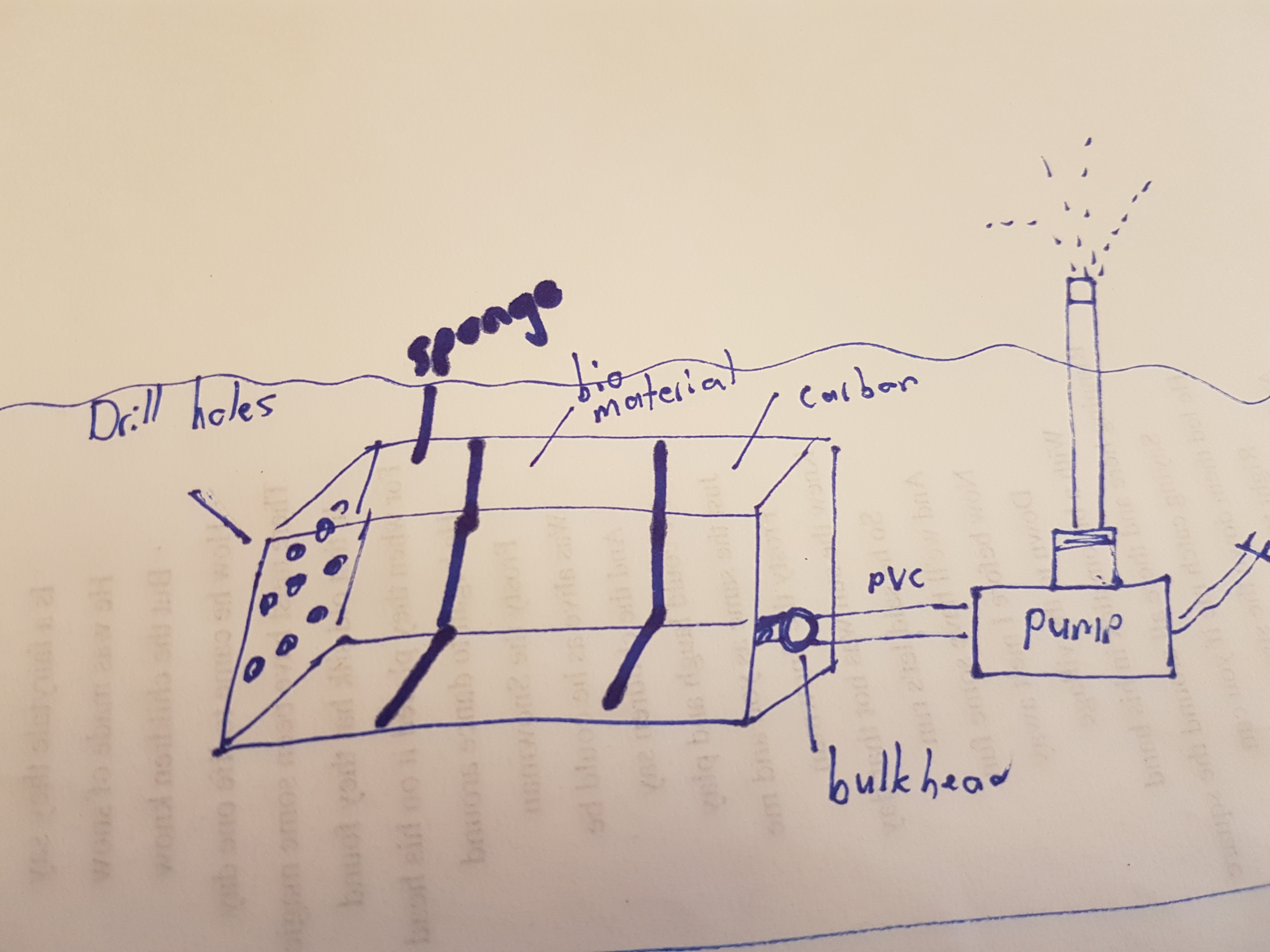Hi, I have a 1300 gallon pond, and I am planning to build a DIY biofilter. As I am searching the net - it seems that in all the designs the filter is outside the pond. Is there a reason for this? My plan is [was] to make a submersible filter, but now I have my doubts. Can someone please be so kind as to tell me what is wrong with my logic?
What I plan is a tote box, sitting on the bottom, connected to my pump. Forgive my hand drawn diagram! I have a 2000g/h pump, and was planning to line the tote with filter sponges --> bioballs --> carbon.

The reason I have for making it submersible is to hide the setup, and not have an eyesore outside.
I would like any suggestions, please.
What I plan is a tote box, sitting on the bottom, connected to my pump. Forgive my hand drawn diagram! I have a 2000g/h pump, and was planning to line the tote with filter sponges --> bioballs --> carbon.

The reason I have for making it submersible is to hide the setup, and not have an eyesore outside.
I would like any suggestions, please.


